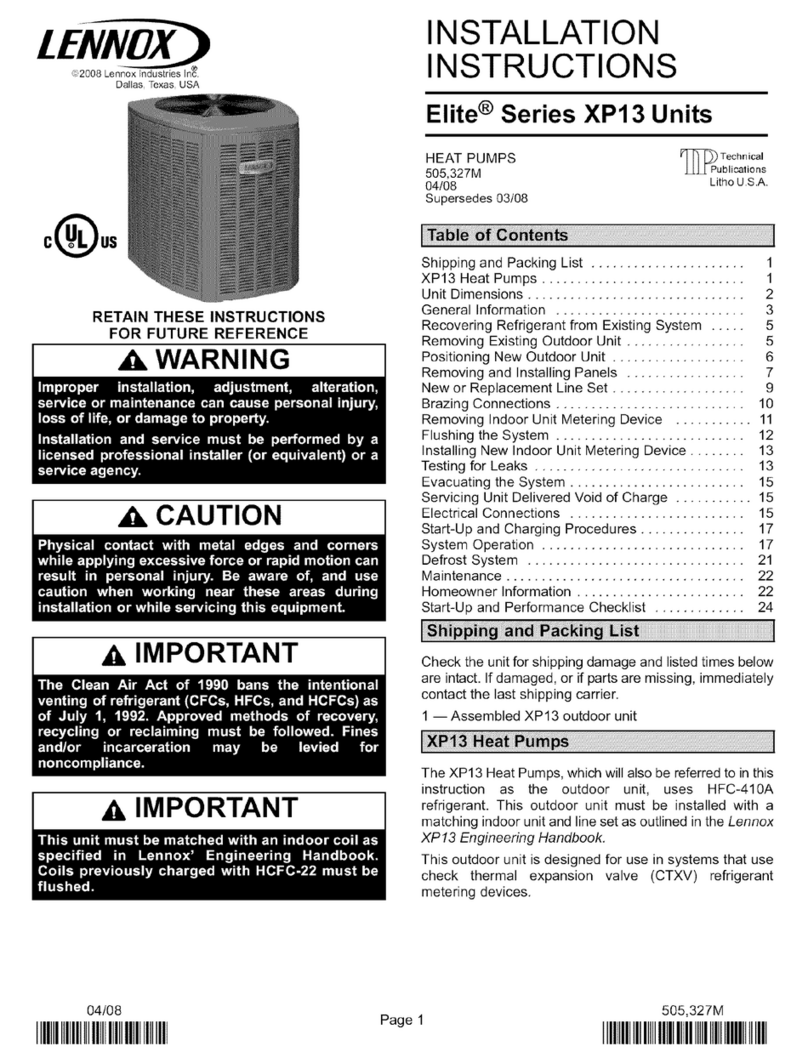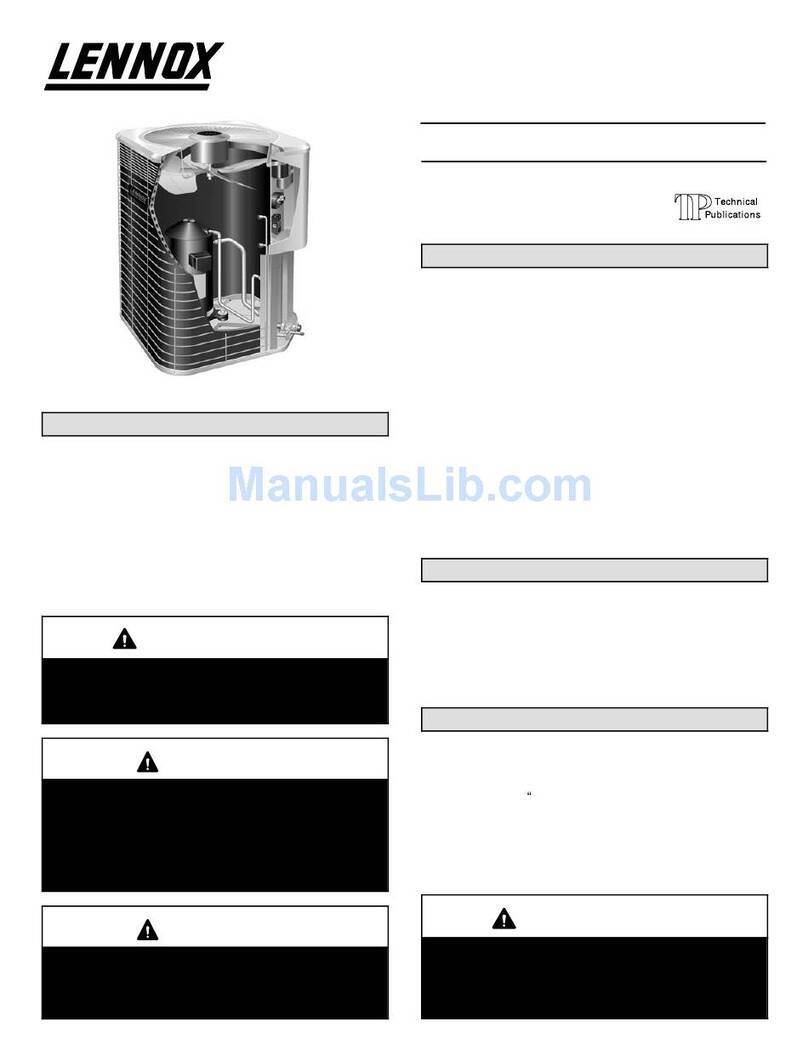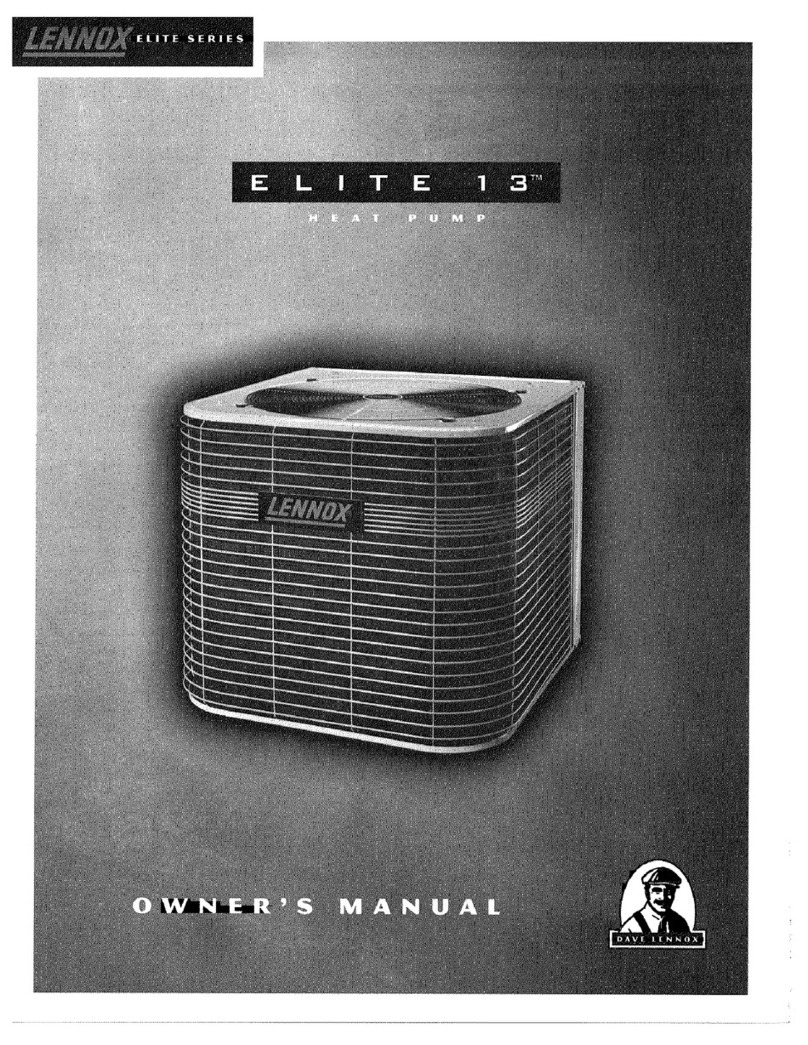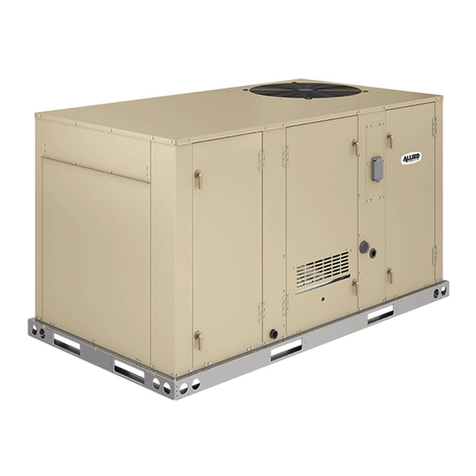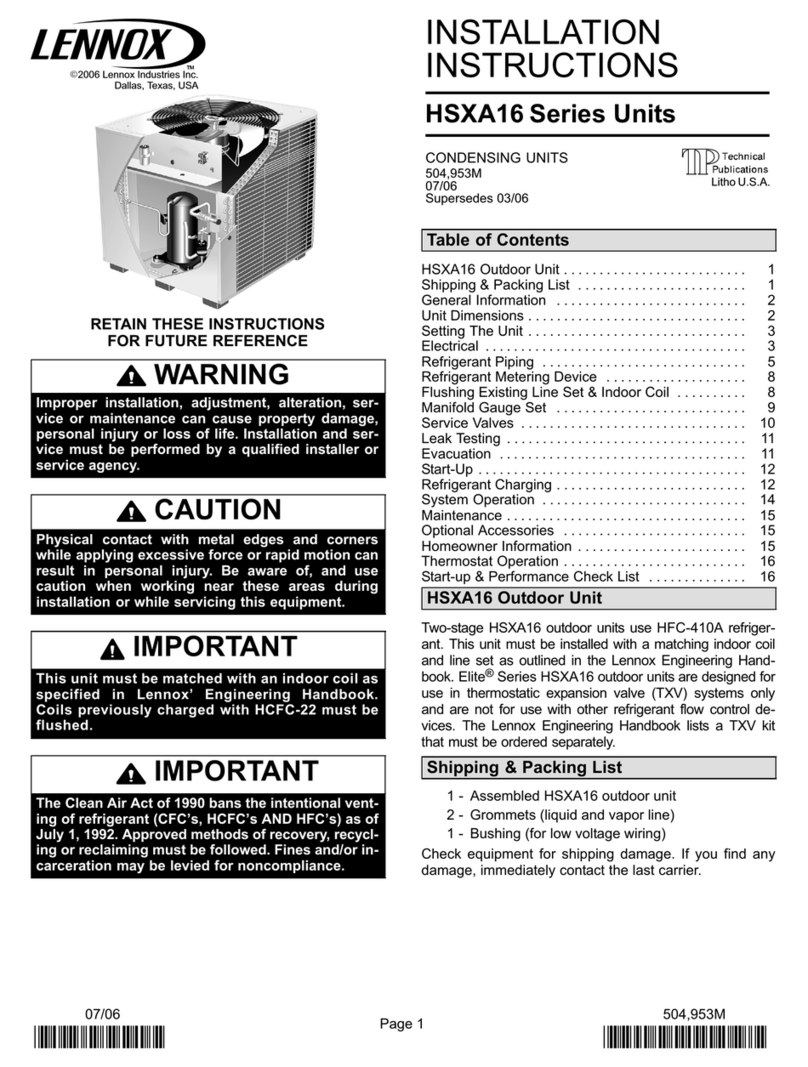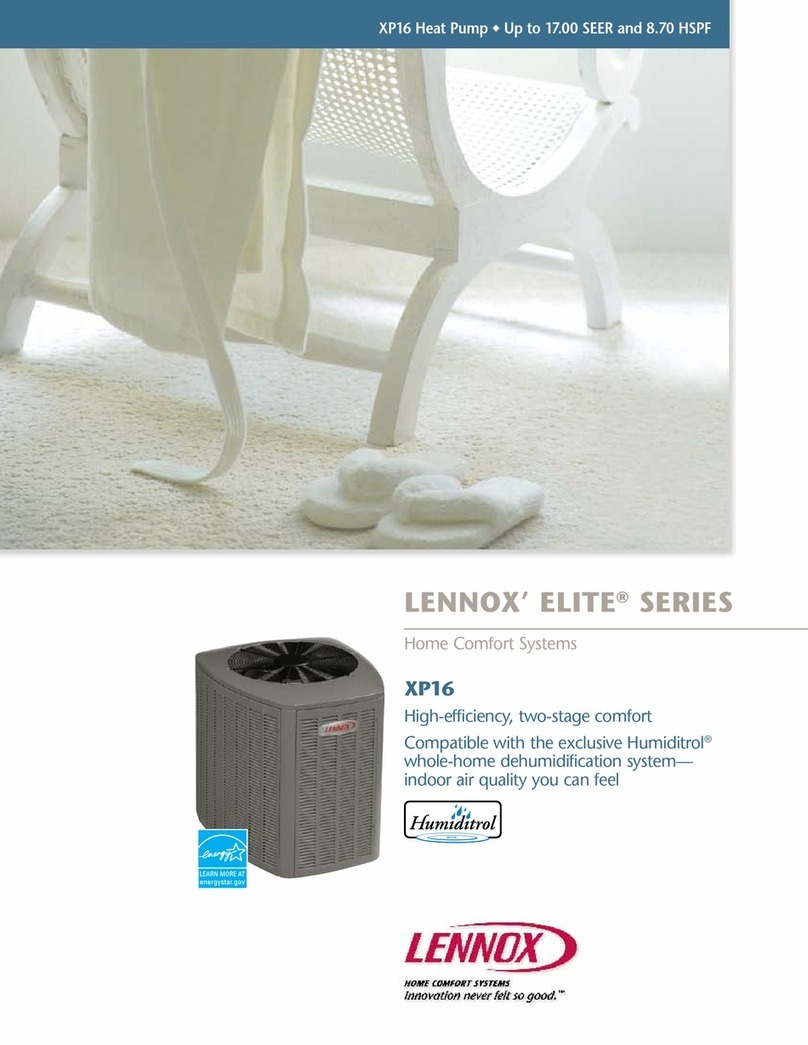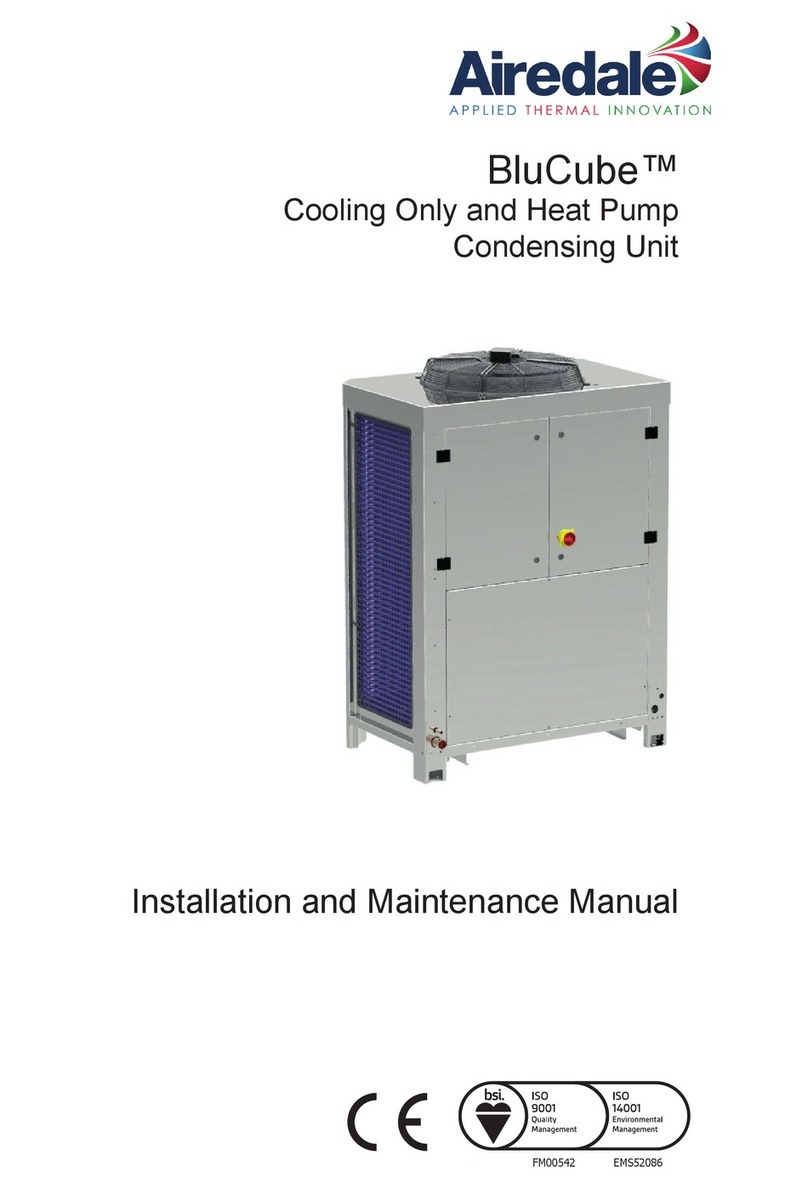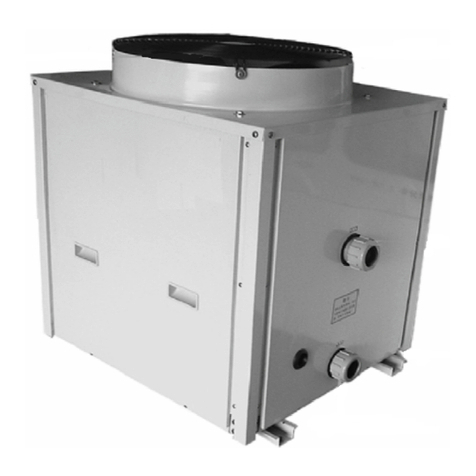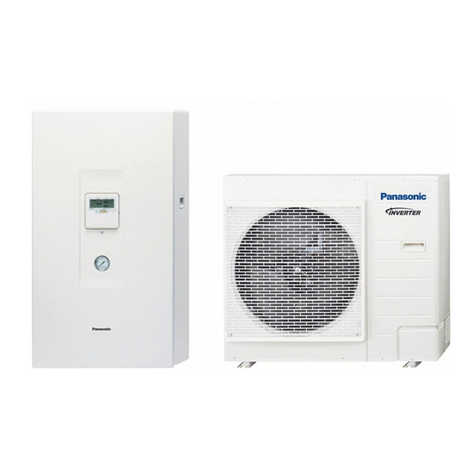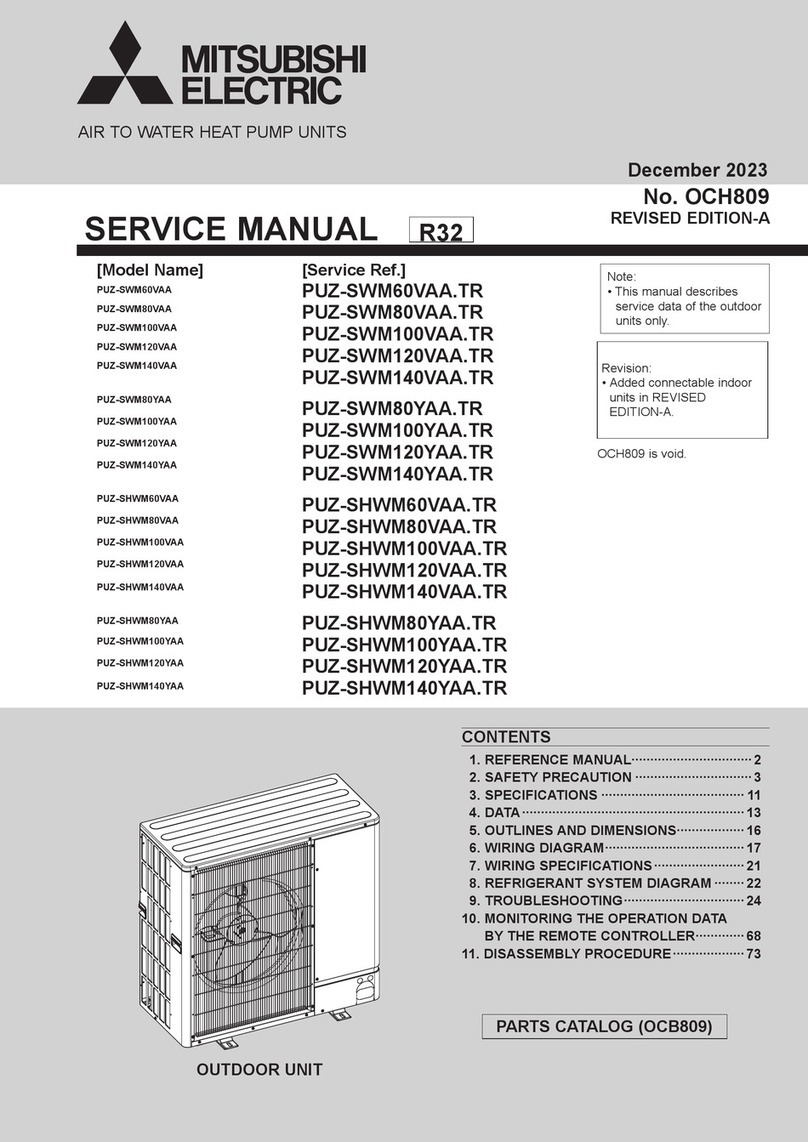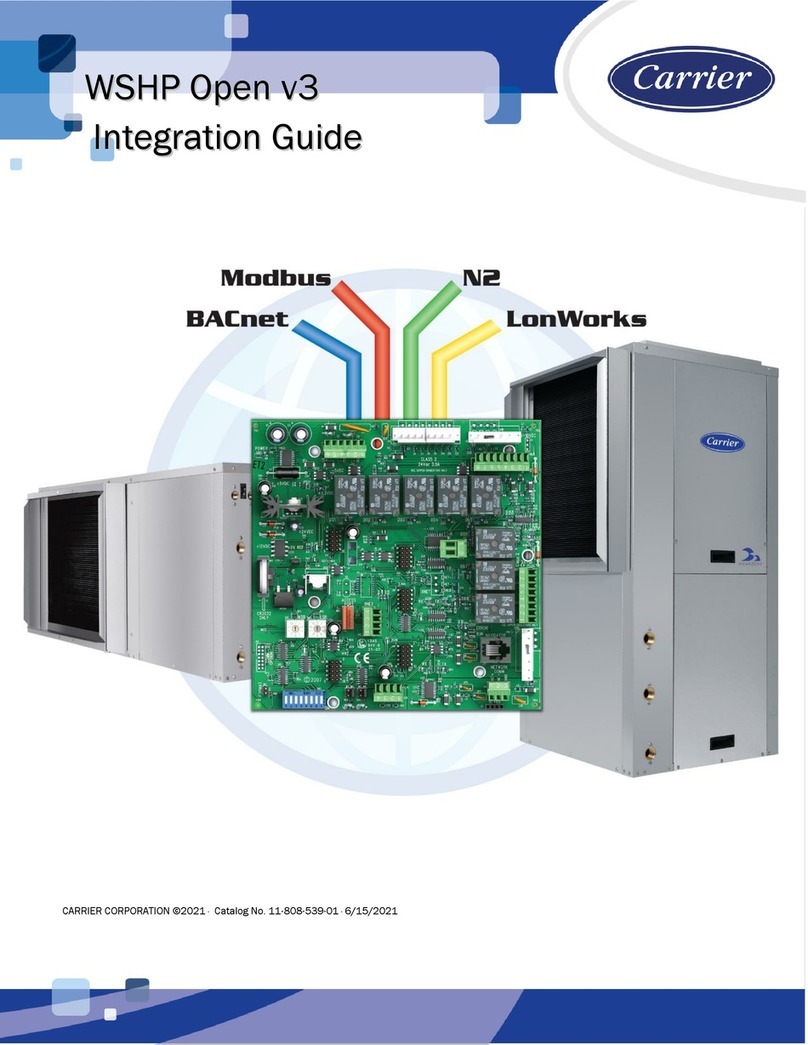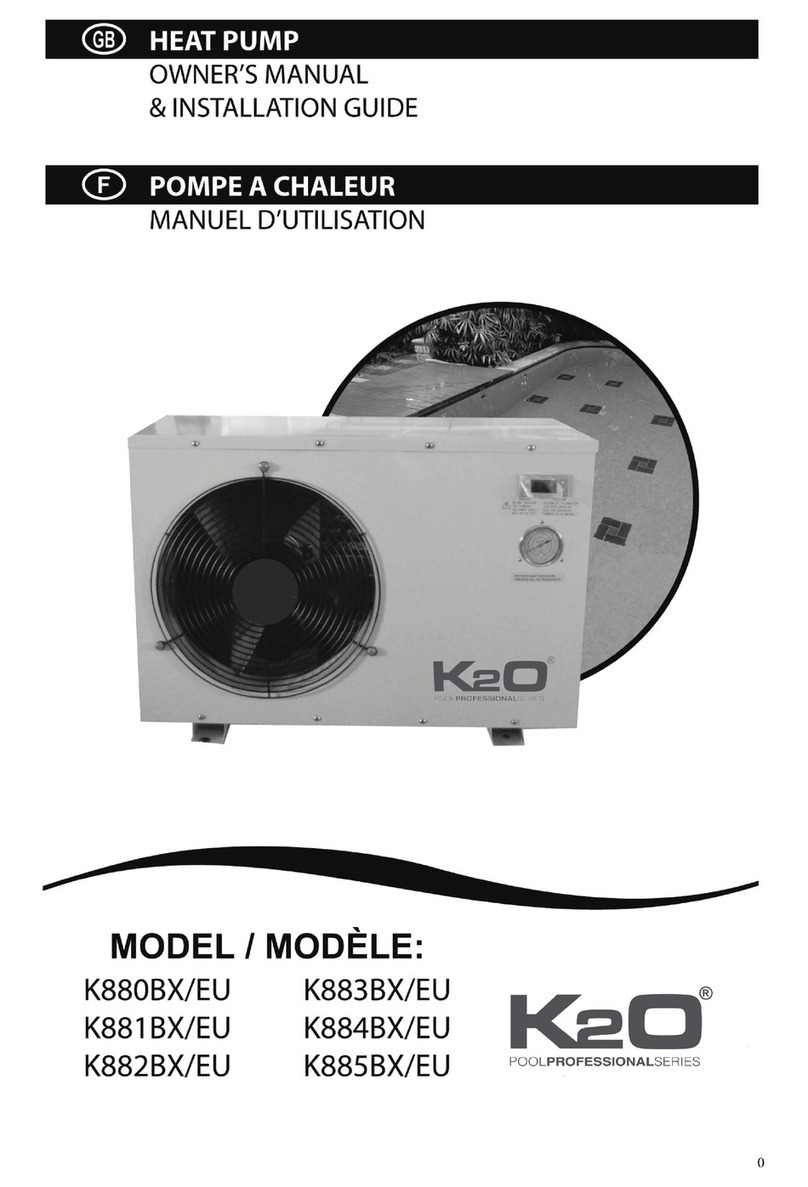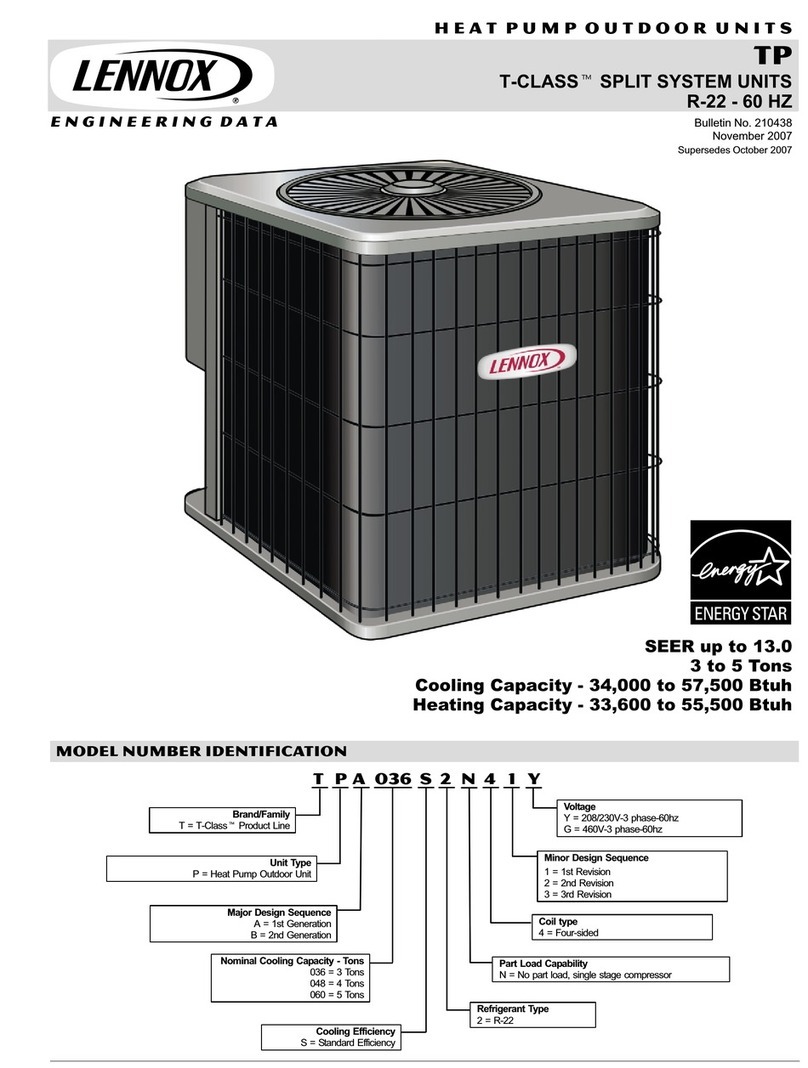
Page 10
Check sensors by measuring resistance (ohms)
through the sensors with the wires disconnected
from the control (unit not running). The sensor wires
are not olarity sensitive. Table 3 shows winding
tem erature sensor resistance values which will
cause the TSC to lock out. When unit is o erating
normally, resistance through the sensors should be
below the tri value shown in table 3.
TABLE 3
Compressor Winding
Temperat re Sensor
Trip Ohms
Temp. Rise
Reset Ohms
Temp. Fall
TSC5 Copeland Compressor 25K to 35K 8.4K to 10K
The control can be checked by com aring the reĆ
sistance measured through the sensors to the
voltage measured across the sensor terminals
with the unit running. Table 4 shows voltage meaĆ
sured across twoĆs eed control terminals S1 and
S2 with the com ressor running.
Reset
Range
TABLE 4
Resistance Thro gh
Compressor Winding
Temperat re Sensor
KĆohms (ohms x 1000)
Voltage Across TSC5
compressor sensor terminals
with Unit R nning DC Volts
0
1.0
5.5
6.9
8.4
10.0
16.0
20.0
24.0
25.0
30.0
35.0
Trip
Range
+-
DC volts
Measured with unit running.
COMPRESSOR WINDING SENSOR
OPERATING RANGE
0
1.70 - 1.82
6.07 - 6.48
6.86 - 7.33
7.55 - 8.07
8.16 - 8.72
9.69 - 10.36
10.34 - 11.05
10.82 - 11.57
10.93 - 11.68
11.35 - 12.14
11.68 - 12.48
MODE SELECTION JUMPERS
The control has six mode selection j mpers for selection of
operating modes and problem code recall or test. Choose
one of the first fo r modes for operation.
Normal: Normal operation (defa lt mode). Unit
r ns on high or low speed as the indoor
thermostat load demands.
Latch 1: After high speed demand is met, the nit
remains in high speed ntil the low speed
demand is satisfied.
Latch 2: After the nit operates in low speed for 15
min tes consec tively, it switches to high
speed ntil low speed demand is satisfied.
Latch 3: After the nit operates in low speed for 30
min tes consec tively, it switches to high
speed ntil low speed demand is satisfied.
Recall: Used in conj nction with the bypass
b tton to recall the stored problem codes.
Test: Used in conj nction with the control
b tton to start test mode.
Latch 2 or 3 modes are recommended in high h midity
areas. If the j mper falls off or is removed, the control will
contin e to operate in the previo sly set mode ntil the
control is reset d e to loss of power, then the control will
defa lt to the Normal mode. The latch feat re does not afĆ
fect the indoor blower operation.
TEST MODE
The control has a test mode. To initiate this mode, move
the j mper to the test position and p sh the control b tton.
The nit will operate in low speed for 10 seconds, t rn off
for ten seconds, then operate in high speed for 10 seĆ
conds. The control will only go into the test mode if there is
no thermostat demand and 5 min tes has elapsed since
the nit ran. The indoor blower does not r n d ring this
mode. The test mode cannot r n more than once every 5
min tes.
LED LIGHTS
Y1 and Y2 lights are connected directly to the inp ts from the
thermostat. They indicate low and high speed demand, reĆ
spectively.
The HI and LO lights are connected directly across the conĆ
tactor coils. They indicate if the high and low speed contactors
are energized.
The HEARTBEAT light is connected to the microcontroller
nit (MCU). It indicates when the control's MCU is operating
correctly, and also when the control is in delay mode. It blinks
at a rate of fo r times a second when the MCU is operating
properly and at a rate of once every two seconds when in the
delay mode (s ch as the 1 or 5 min te delay). If the LED is
contin o sly on or off (ass ming the power is on), the MCU is
not operating properly and the control needs to be replaced.
The D1, D2, D4, and D8 (see fig re 7) diagnostic lights disĆ
play diagnostic codes to aid in nit tro bleshooting. Refer to
Diagnostic Code Table (table 5).
Diagnostic Code Display
A problem code is normally displayed only for the d ration of
the error. There is one exception. D ring a locko t, the code
for the problem ca sing the locko t flashes once a second
even if the problem condition no longer exists. If other probĆ
lems occ r d ring a locko t condition, the codes for those
problems will be saved in memory, b t not displayed. The
stored problem codes are displayed by recalling them from
memory. The diagnostic codes can be reĆdisplayed by setting
the j mper to the recall position. The stored codes are disĆ
played by p shing the p sh b tton. As previo sly mentioned,
the p sh b tton is sed to bypass the fiveĆmin te delay and to
initiate the test mode. In addition, the b tton is sed to step
back thro gh the stored diagnostic codes and erase the diagĆ
nostic code memory. Diagnostic codes are recalled in the
reverse order of act al occ rrence. Each s bseq ent b tton

